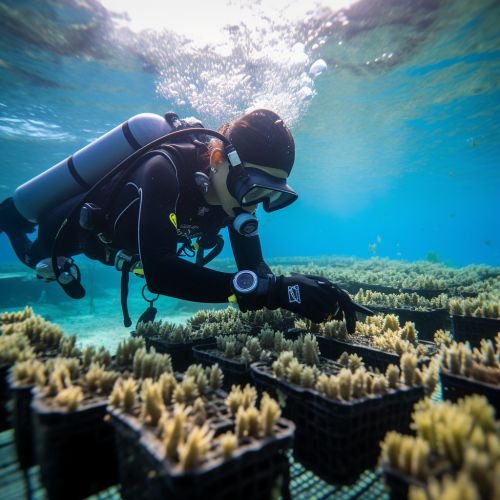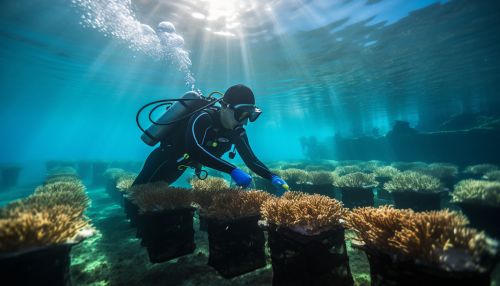Coral Bleaching
Introduction
Coral bleaching is a phenomenon that occurs when environmental stressors lead to the expulsion of the symbiotic algae, known as Zooxanthellae, living within the coral polyps. This results in the coral losing its vibrant color and turning white, hence the term 'bleaching'. It is a serious issue as it can lead to the death of the coral and has significant impacts on marine ecosystems and biodiversity.
Causes of Coral Bleaching
The primary cause of coral bleaching is increased sea temperatures, often due to global warming. Other factors such as changes in light, increased sedimentation, pollution, and changes in salinity can also contribute to the bleaching of corals.
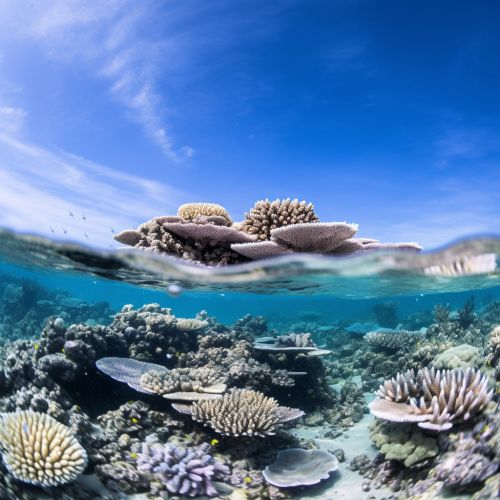
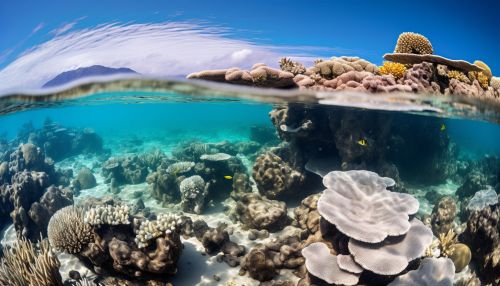
Effects of Coral Bleaching
When corals bleach, they are not immediately dead. They are, however, under more stress and are subject to higher mortality rates. In particular, bleached corals have lower growth rates, decreased reproductive capacity, and increased susceptibility to diseases.
Global Warming and Coral Bleaching
The link between global warming and coral bleaching is well established. As global temperatures rise, so do sea surface temperatures. Corals are sensitive to temperature changes and even a slight increase can lead to bleaching.


Prevention and Mitigation
Efforts to prevent and mitigate coral bleaching primarily focus on reducing global warming by limiting greenhouse gas emissions. Other strategies include improving water quality, reducing overfishing, and establishing marine protected areas.
Impact on Marine Ecosystems
Coral reefs are often referred to as the 'rainforests of the sea' due to their high biodiversity. Coral bleaching can therefore have significant impacts on marine ecosystems, affecting species that depend on the reefs for food, shelter, and breeding grounds.
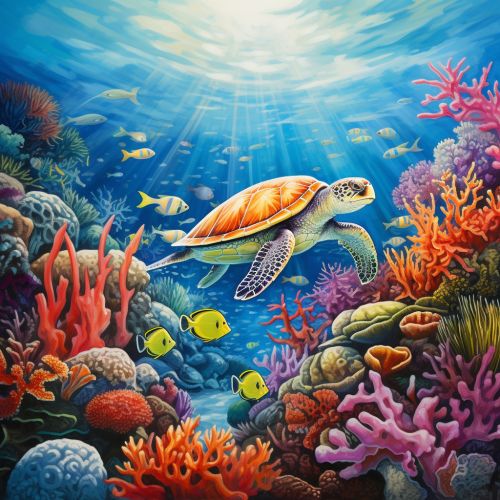
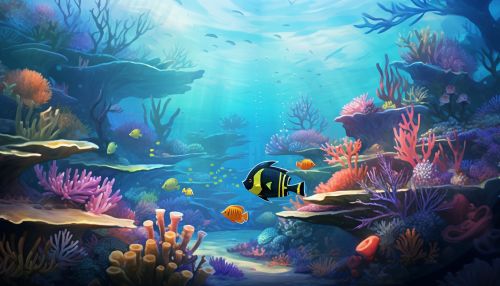
Impact on Human Societies
Coral reefs also provide numerous benefits to human societies, including tourism, fisheries, and coastal protection. Coral bleaching can therefore have significant socio-economic impacts.
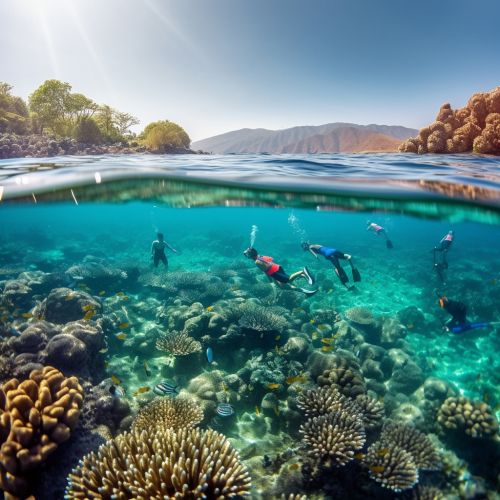

Future of Coral Reefs
The future of coral reefs is uncertain due to the ongoing threat of coral bleaching. However, research is ongoing into ways to help corals adapt to changing conditions, including the possibility of 'coral gardening' and genetic modification.
